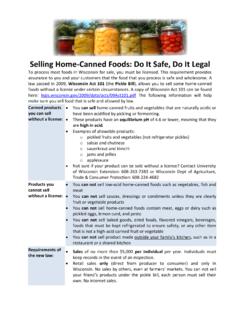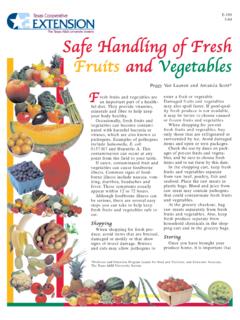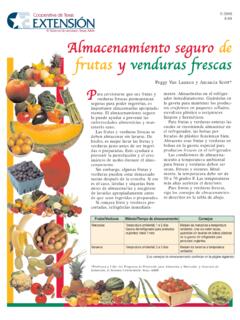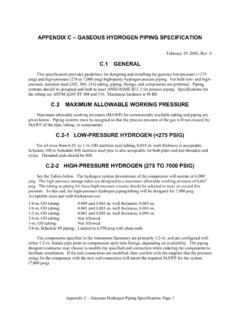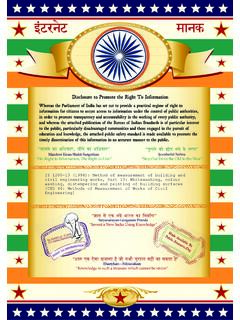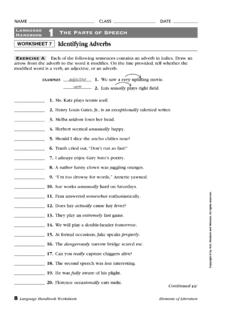Transcription of Basic Steps to a Clean and Sanitary Kitchen
1 Basic Steps to a Clean and Sanitary Kitchen Whether you are working in your own Kitchen or helping with a church or community event, there are three Basic Steps to keeping a Kitchen Clean and Sanitary . Step 1. Wash all surfaces, pots, pans and utensils with warm soapy water. Food particles and dirt can harbor germs, so be sure to remove all food and dirt from Kitchen surfaces and cookware. Use some elbow grease ' if you need to. plain dish soap and water is best- there is no need to use an antibacterial soap. Soap is designed to lift dirt off surfaces, sometimes with scrubbing, and warm water will help soap to work most effectively.
2 There isn't any need to use very hot water; cold water will work in a pinch. Step 2. Rinse surfaces, pots, pans and utensils to remove dirt and soapy residue. Use warm, running water to rinse away food particles, dirt, and soapy residue. As you rinse away dirt and soap, germs will also be washed away. Step 3. Sanitize rinsed surfaces to kill remaining germs. Once surfaces, pots, pans and utensils have been washed and rinsed, it's a good idea to follow up with a sanitizing step. A. sanitizing step will help kill any germs that might remain on a cleaned surface.
3 There are two common types of chemical sanitizers- chlorine bleach and quaternary ammonium compounds. Chlorine bleach is the easiest and most effective chemical sanitizer to use. Instructions for using chlorine bleach: Mix 1 teaspoon bleach per quart of warm water in a spray bottle. Spray surfaces such as countertops and cutting boards with this bleach solution and allow to air dry. If you choose to dry surfaces with a towel, then allow the bleach spray to remain on the surface for at least 30 seconds. Mix 1 Tablespoon bleach per gallon of warm water in a sink or pail.
4 Allow pots, pans and utensils to soak in the dilute bleach solution for 2 minutes. Drain, and allow to air dry. Do not add more bleach than is recommended, and be sure to start off with a surface that has been washed and rinsed, or the bleach will not be effective. This type of dilute chlorine bleach solution can be stored in a closed container such as a spray bottle for up to one week. If you mix a bleach solution in an open pail or sink, be sure to freshen the solution at least once every 2 hours, or more often as needed. Products such as Lysol disinfectant are quaternary ammonium chemical sanitizers or quats'.
5 The active ingredient in this type of sanitizer will be listed on the product label, alkyl (C12, C14, C16) dimethyl benzyl ammonium chloride. Unlike bleach-based sanitizers, quats can often effectively kill germs on surfaces that have not been fully washed and rinsed. But the disadvantages to using a quat are that these compounds usually must remain on a surface for at least 10 minutes, and very often a surface must be rinsed after a quat is used and before food is placed on the surface. Some commercial kitchens may have a contracted supply of quaternary ammonium sanitizer.
6 A dishwasher can also serve to effectively sanitize dishes, but first check to make sure the water temperature reaches at least 180 F. Note: Be sure to read and follow label directions carefully for any type of chemical compound that you choose to use.
